Stephan Vogt
Targeted Adversarial Attacks on Wind Power Forecasts
Mar 29, 2023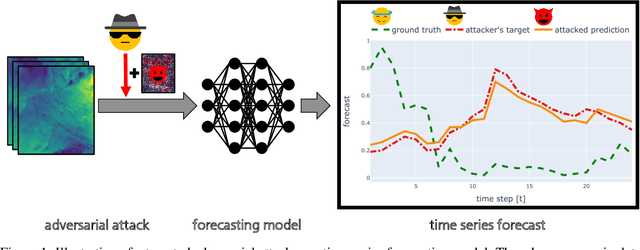

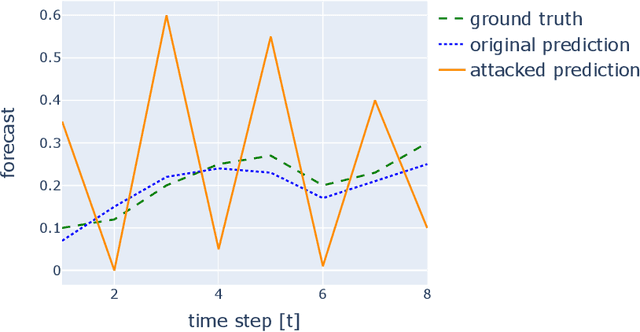

Abstract:In recent years, researchers proposed a variety of deep learning models for wind power forecasting. These models predict the wind power generation of wind farms or entire regions more accurately than traditional machine learning algorithms or physical models. However, latest research has shown that deep learning models can often be manipulated by adversarial attacks. Since wind power forecasts are essential for the stability of modern power systems, it is important to protect them from this threat. In this work, we investigate the vulnerability of two different forecasting models to targeted, semitargeted, and untargeted adversarial attacks. We consider a Long Short-Term Memory (LSTM) network for predicting the power generation of a wind farm and a Convolutional Neural Network (CNN) for forecasting the wind power generation throughout Germany. Moreover, we propose the Total Adversarial Robustness Score (TARS), an evaluation metric for quantifying the robustness of regression models to targeted and semi-targeted adversarial attacks. It assesses the impact of attacks on the model's performance, as well as the extent to which the attacker's goal was achieved, by assigning a score between 0 (very vulnerable) and 1 (very robust). In our experiments, the LSTM forecasting model was fairly robust and achieved a TARS value of over 0.81 for all adversarial attacks investigated. The CNN forecasting model only achieved TARS values below 0.06 when trained ordinarily, and was thus very vulnerable. Yet, its robustness could be significantly improved by adversarial training, which always resulted in a TARS above 0.46.
Fast Bayesian Updates for Deep Learning with a Use Case in Active Learning
Oct 12, 2022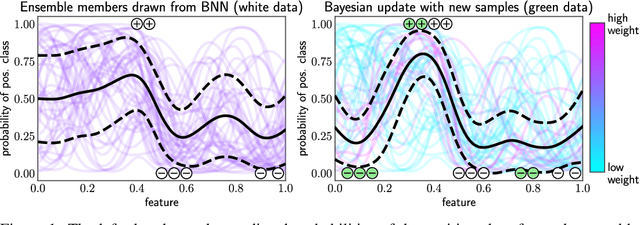
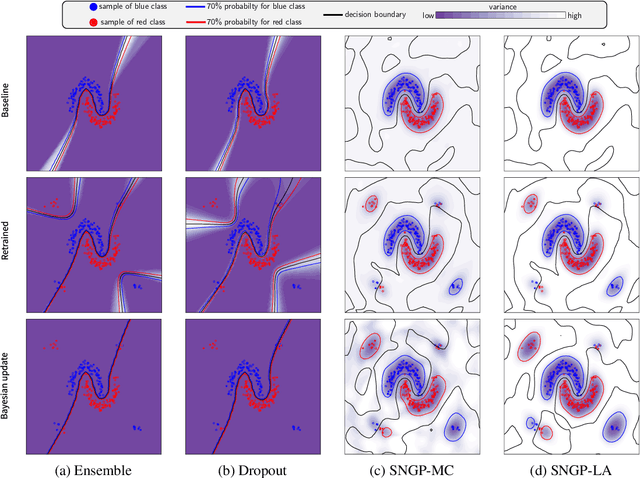
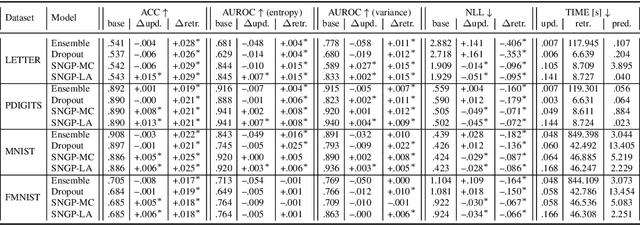
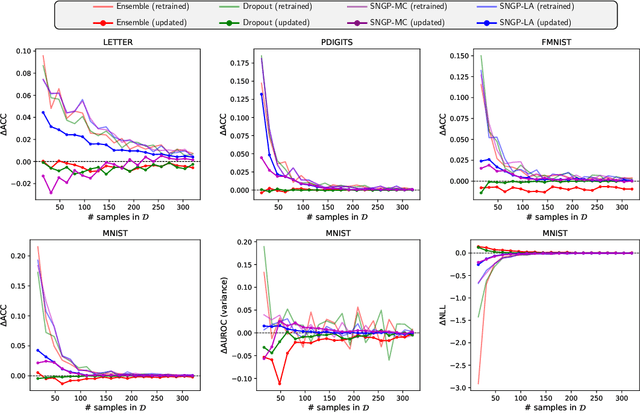
Abstract:Retraining deep neural networks when new data arrives is typically computationally expensive. Moreover, certain applications do not allow such costly retraining due to time or computational constraints. Fast Bayesian updates are a possible solution to this issue. Therefore, we propose a Bayesian update based on Monte-Carlo samples and a last-layer Laplace approximation for different Bayesian neural network types, i.e., Dropout, Ensemble, and Spectral Normalized Neural Gaussian Process (SNGP). In a large-scale evaluation study, we show that our updates combined with SNGP represent a fast and competitive alternative to costly retraining. As a use case, we combine the Bayesian updates for SNGP with different sequential query strategies to exemplarily demonstrate their improved selection performance in active learning.
Task Embedding Temporal Convolution Networks for Transfer Learning Problems in Renewable Power Time-Series Forecast
Apr 29, 2022



Abstract:Task embeddings in multi-layer perceptrons for multi-task learning and inductive transfer learning in renewable power forecasts have recently been introduced. In many cases, this approach improves the forecast error and reduces the required training data. However, it does not take the seasonal influences in power forecasts within a day into account, i.e., the diurnal cycle. Therefore, we extended this idea to temporal convolutional networks to consider those seasonalities. We propose transforming the embedding space, which contains the latent similarities between tasks, through convolution and providing these results to the network's residual block. The proposed architecture significantly improves up to 25 percent for multi-task learning for power forecasts on the EuropeWindFarm and GermanSolarFarm dataset compared to the multi-layer perceptron approach. Based on the same data, we achieve a ten percent improvement for the wind datasets and more than 20 percent in most cases for the solar dataset for inductive transfer learning without catastrophic forgetting. Finally, we are the first proposing zero-shot learning for renewable power forecasts to provide predictions even if no training data is available.
Synthetic Photovoltaic and Wind Power Forecasting Data
Apr 01, 2022



Abstract:Photovoltaic and wind power forecasts in power systems with a high share of renewable energy are essential in several applications. These include stable grid operation, profitable power trading, and forward-looking system planning. However, there is a lack of publicly available datasets for research on machine learning based prediction methods. This paper provides an openly accessible time series dataset with realistic synthetic power data. Other publicly and non-publicly available datasets often lack precise geographic coordinates, timestamps, or static power plant information, e.g., to protect business secrets. On the opposite, this dataset provides these. The dataset comprises 120 photovoltaic and 273 wind power plants with distinct sides all over Germany from 500 days in hourly resolution. This large number of available sides allows forecasting experiments to include spatial correlations and run experiments in transfer and multi-task learning. It includes side-specific, power source-dependent, non-synthetic input features from the ICON-EU weather model. A simulation of virtual power plants with physical models and actual meteorological measurements provides realistic synthetic power measurement time series. These time series correspond to the power output of virtual power plants at the location of the respective weather measurements. Since the synthetic time series are based exclusively on weather measurements, possible errors in the weather forecast are comparable to those in actual power data. In addition to the data description, we evaluate the quality of weather-prediction-based power forecasts by comparing simplified physical models and a machine learning model. This experiment shows that forecasts errors on the synthetic power data are comparable to real-world historical power measurements.
Quantile Surfaces -- Generalizing Quantile Regression to Multivariate Targets
Sep 29, 2020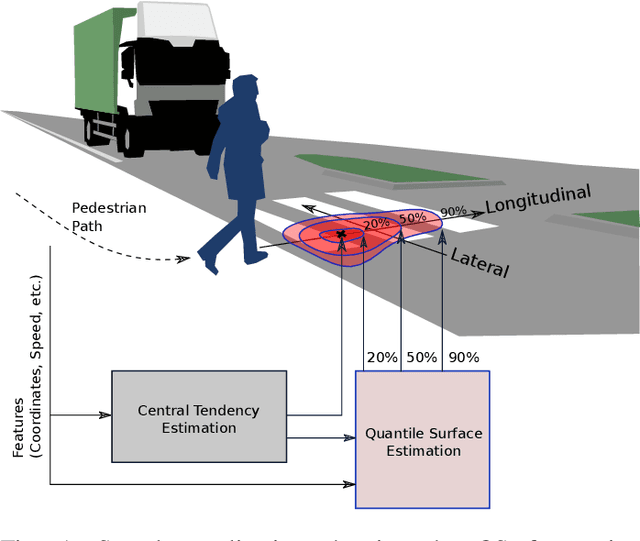
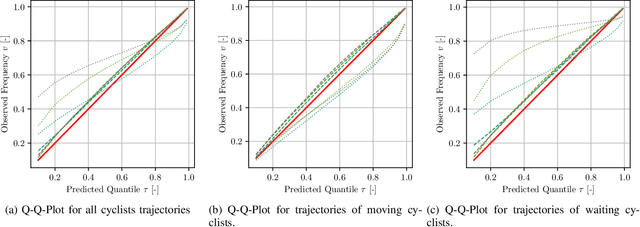
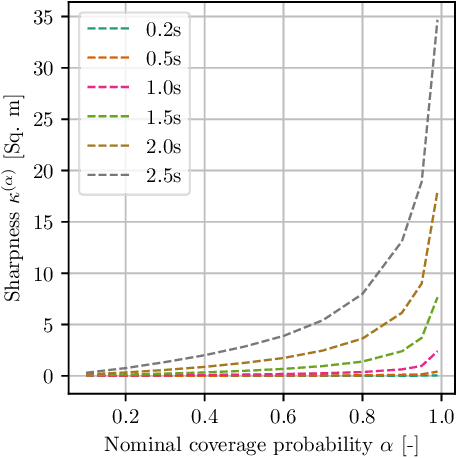
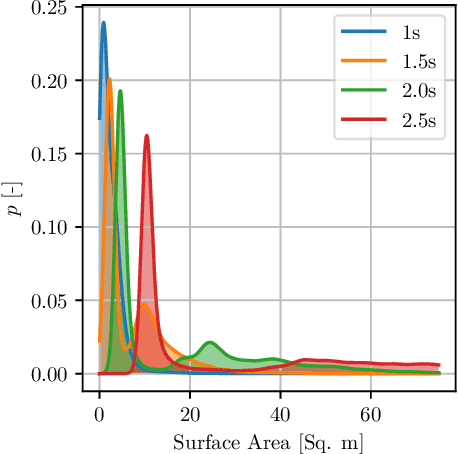
Abstract:In this article, we present a novel approach to multivariate probabilistic forecasting. Our approach is based on an extension of single-output quantile regression (QR) to multivariate-targets, called quantile surfaces (QS). QS uses a simple yet compelling idea of indexing observations of a probabilistic forecast through direction and vector length to estimate a central tendency. We extend the single-output QR technique to multivariate probabilistic targets. QS efficiently models dependencies in multivariate target variables and represents probability distributions through discrete quantile levels. Therefore, we present a novel two-stage process. In the first stage, we perform a deterministic point forecast (i.e., central tendency estimation). Subsequently, we model the prediction uncertainty using QS involving neural networks called quantile surface regression neural networks (QSNN). Additionally, we introduce new methods for efficient and straightforward evaluation of the reliability and sharpness of the issued probabilistic QS predictions. We complement this by the directional extension of the Continuous Ranked Probability Score (CRPS) score. Finally, we evaluate our novel approach on synthetic data and two currently researched real-world challenges in two different domains: First, probabilistic forecasting for renewable energy power generation, second, short-term cyclists trajectory forecasting for autonomously driving vehicles. Especially for the latter, our empirical results show that even a simple one-layer QSNN outperforms traditional parametric multivariate forecasting techniques, thus improving the state-of-the-art performance.
 Add to Chrome
Add to Chrome Add to Firefox
Add to Firefox Add to Edge
Add to Edge